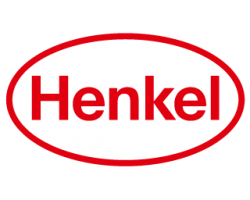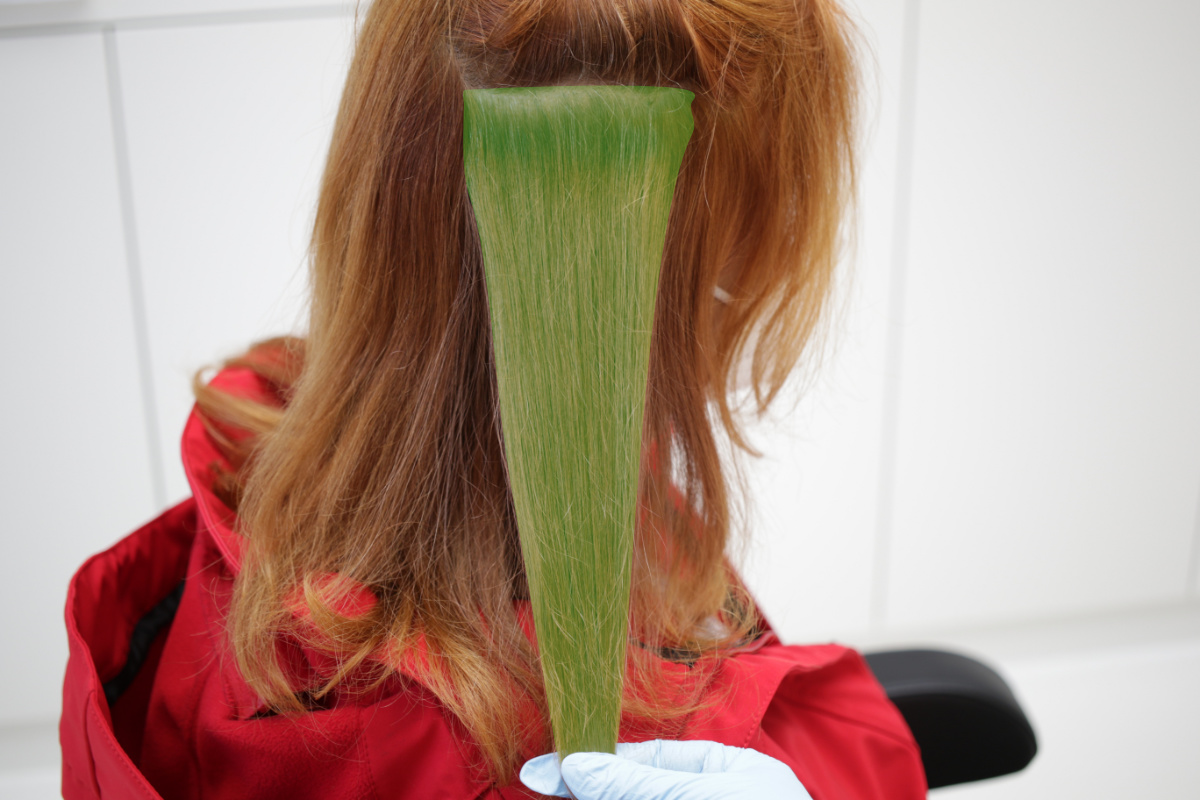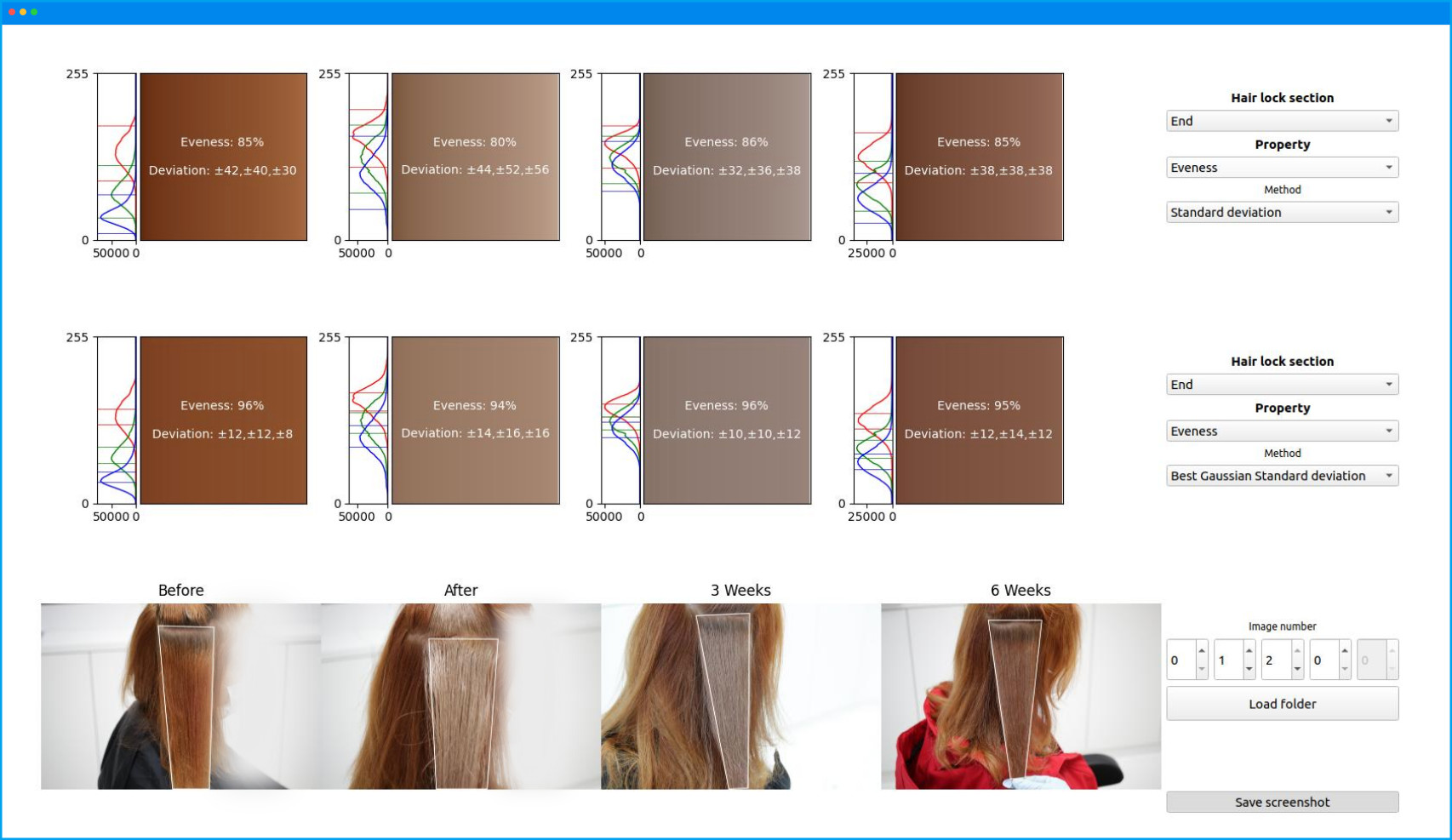

Image: Hair segmentation.
The core technologies for this project are:
We’ve developed a series of computer vision solutions to study the quality of Henkel’s new hair care products (QA process). These products – hair dyes, hair conditioners, and hair mascaras – undergo extensive quality controls before they reach the market. The quality control process consists in analyzing the color obtained after dyeing, the resistance to washing, and homogeneity, shine, flexibility, and movement of the hair among other key points.
Thanks to our automated tool, the QA process can be performed accurately and objectively in a fraction of the time required to do it manually.

Image: User interface tool with controls and color measurements.
Before, these processes were performed manually by direct observation. Different products were applied to people’s hair -or standardized hair for experiments- and they were evaluated by a group of hair treatment experts. In addition to the time required by these experts to assess the suitability of each new formula, Henkel was facing the problem of individual and non-objective assessment.
Thanks to our computer vision algorithms, we study color, homogeneity, behavior, flexibility, gloss and other parameters instantaneously and objectively.
A specific algorithm has been developed for each parameter. Convolutional Neural Networks (CNN) for object segmentation is used to delimit the hair strands of interest. In addition, automatic color calibration and white balancing algorithms are used to obtain the most accurate range of colors. Regression machine learning models are used to estimate color homogeneity, as well as various distance metrics in color spaces such as CIE L*a*b*, to resemble human color perception as closely as possible. Computer vision techniques based on geometric estimations have also been employed to detect key points within the hair strands treated with these innovative products.
As another example, to automate the hair swing test performed at Henkel, we’ve created an algorithm and a desktop application to analyze the flexibility and movement automatically, quickly and accurately. Our algorithm segment the strand of hair and it detects the points in each fps instantaneously and objectively.
![]()
In the analysis the application track the skeleton of the hair, the air tips and the general points such as the scale or the shafts while a motor rotates the hair.
The application helps to measure the movement and speed and thanks to the UI all the data are visualized in mathematical sheets and charts. These data helps to comprehend how the hair’s elasticity and smoothness after applying the product.
(1) Source: URL [www.henkel.com/company]
Henkel logo © 2022 Henkel AG & Co. KGaA. All rights reserved.
Share your thoughts
No Comments
Sorry, the comment form is closed at this time.